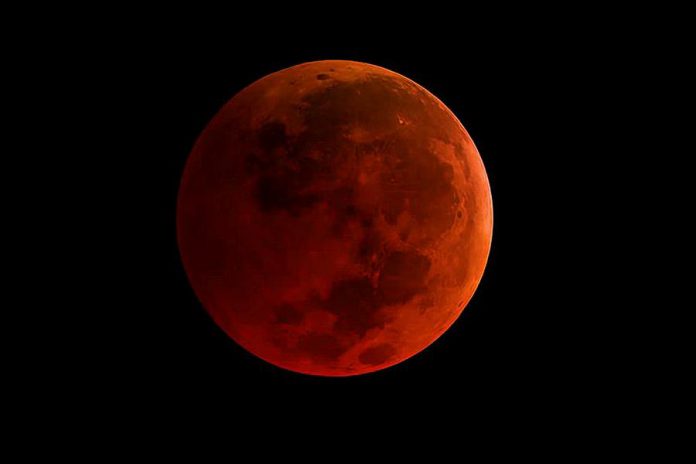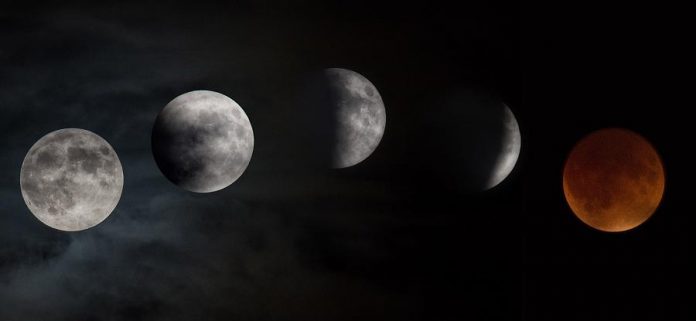
For the second January in a row, we will have a chance to see a lunar eclipse in the Kawarthas.
However, unlike last year’s partial lunar eclipse, this year we’ll be able to see a total lunar eclipse — with the earth’s shadow completely obscuring the moon, turning it a deep red.
The eclipse will happen in the late evening of Sunday, January 20th.
And again this year, it has an unusual name. Last year’s eclipse was called a “Super Blood Blue Moon” and this year it’s called a “Super Blood Wolf Moon”.
Let’s break that down:
The “super” refers to “supermoon”, the popular term for a perigee full moon — a full moon that happens when the moon is at its perigee (closet to the earth in its monthly orbit). A supermoon can be 14 per cent bigger and 30 per cent brighter than a regular full moon, although the difference is not always noticeable. Supermoons aren’t that rare — about a quarter of all full moons are supermoons.
The “blood” refers to “blood moon”, another popular term to describe a total lunar eclipse, when the earth comes between the sun and the moon and the earth’s shadow completely obscures the moon. It’s called a blood moon because the moon will appear red — a result of sunlight refracted through the earth’s shadow, which scatters blue light and leaves only red (similar to what happens during a sunrise or sunset).
Finally, the “wolf” simply refers to the first full moon of the year. According to folklore, the January full moon is named after the tendency of wolves to howl in hunger in the midwinter due to the lack of food (last January’s full moon was called a “blue moon” because it was the second full moon in the month).
This year’s “Super Blood Wolf Moon” is the only total lunar eclipse of 2019, and it will be visible for its entirety — a full hour — in North and South America.

In the Kawarthas, the eclipse will begin at 10:34 p.m. on Sunday night as the earth’s shadow begins to fall on the moon’s surface. The total eclipse will begin at 11:41 p.m. and end at 12:44 a.m., with totality occurring at 12:12 a.m.
Totality is when the direct sunlight falling onto the moon is completely blocked by the earth, with the only light reaching the moon being refracted by earth’s atmosphere. It’s when the moon will appear its “bloodiest”.
Unlike a solar eclipse, you can safely look at a lunar eclipse. You don’t need to wear any special glasses.
If you live in Peterborough or nearby, you can head to Armour Hill in East City (at the end of Museum Drive at 300 Hunter Street East) where the Peterborough Astronomical Association (PAA) will be hosting a free total lunar eclipse viewing event.
You can bring your own binoculars (or a telescope if you have one), but the PAA will have binoculars and telescopes on hand as well. If you’re driving, leave your vehicle in the parking lot of the Peterborough Museum and Archives and walk up the hill.
This is a weather-dependent event; if it’s cloudy or snowing, the event will be cancelled. The weather forecast as of the date of this story is calling for clear skies on Sunday night.
However, the forecast is also predicting bitterly cold temperatures for Sunday night, with a low of -26°C. So you’ll want to bundle up if you head outside to watch the eclipse.
If it’s too late or too cold for you, you can always watch the total lunar eclipse online. There will be various live streams, including at The Virtual Telescope Project, TimeandDate.com, and Griffith Observatory TV.
If you miss the 2019 total lunar eclipse, you’ll have to wait more than three years until the next one is visible in the Kawarthas.


























